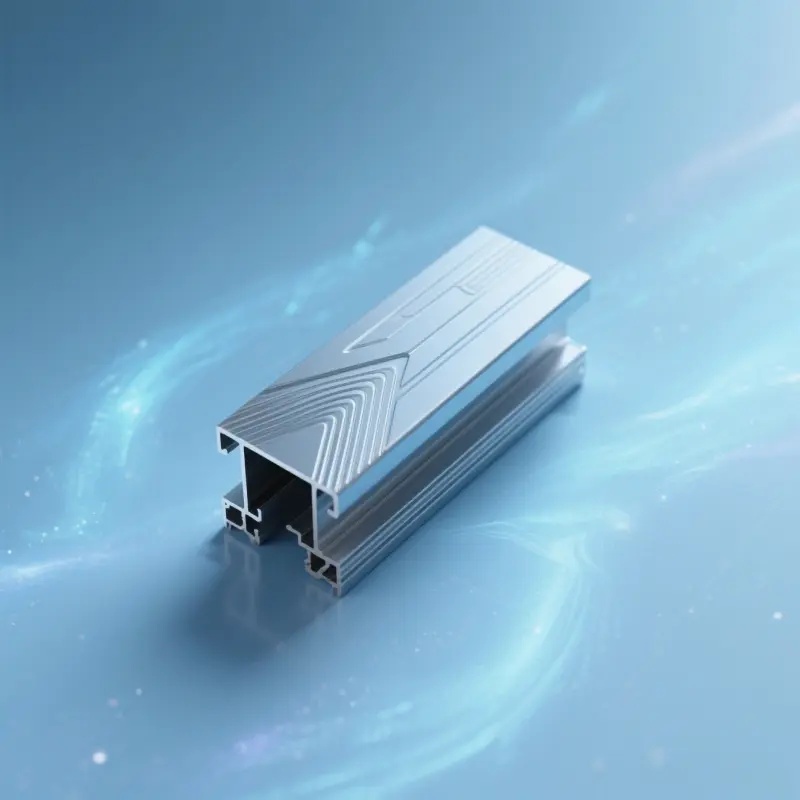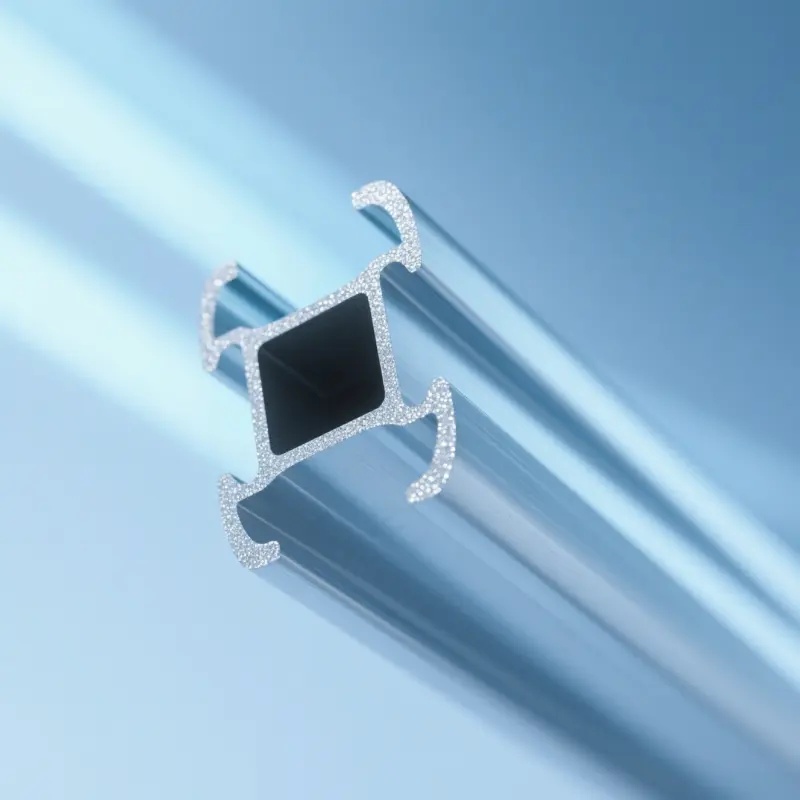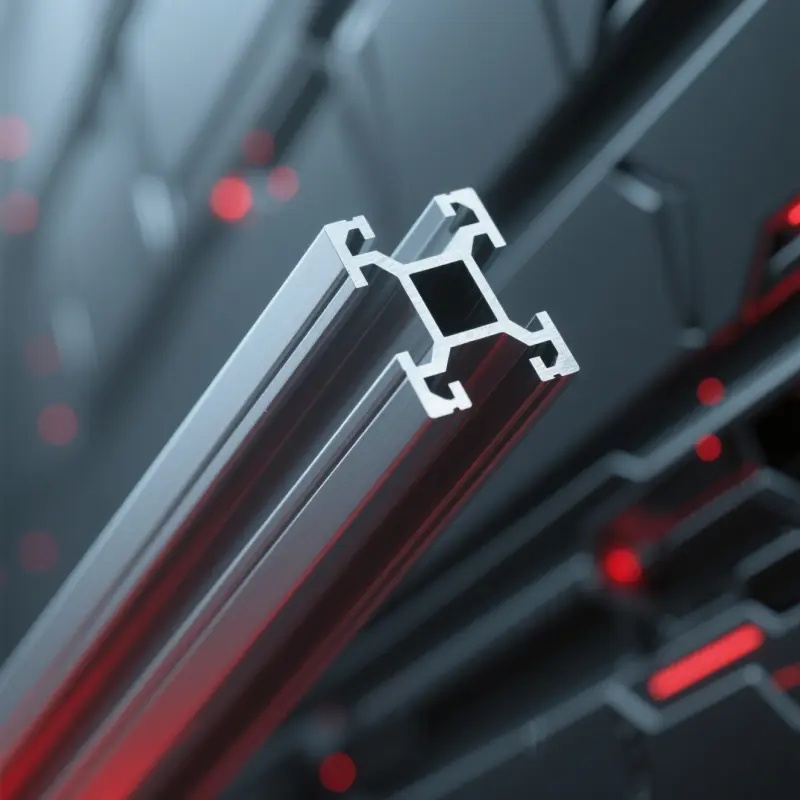
Does Aluminum Rust? When Its 'Good' Corrosion Turns Destructive The Simple Answer to a Common Question Rust vs. Corrosion: The Critical Difference Have you ever wondered, "Does aluminum rust?" If you’ve seen a weathered aluminum patio chair or an old window frame, you might have noticed they don’t flake apart like rusty iron. That’s because aluminum doesn’t rust in the traditional sense—so what really happens to aluminum over time? Aluminum does not rust, but it undergoes a process called oxidation, forming a protective layer. To understand this, let’s break down the difference between corrosion vs rust. Rust is a specific type of corrosion that only affects iron and its alloys (like steel). When iron reacts with oxygen and moisture, it forms iron oxide—better known as rust—which is reddish-brown, flaky, and keeps eating away at the metal beneath. This is why iron structures can weaken and crumble if left unprotected. Aluminum, on the other hand, reacts differently. When exposed to air, it quickly forms a thin, invisible layer of aluminum oxide on its surface. This layer acts like armor, shielding the underlying metal from further attack by air or water. So, while you may hear people ask, “Will aluminum rust?” or “Can aluminum rust?,” the answer is no—aluminum and rust simply don’t go together. Instead, aluminum undergoes a unique form of corrosion that actually protects it. Curious why doesn't aluminum rust the way iron does? The answer lies in the chemistry of aluminum oxide, which we’ll explore in more detail next. Understanding this difference is key to knowing why aluminum is such a popular, long-lasting material for everything from building facades to car parts. Understanding the Science Behind the Surface What is Rust? The Chemistry of Iron Oxide Sounds complex? Let’s break it down. When iron or steel is left exposed to air and moisture, a familiar reddish-brown layer forms—this is rust, or iron oxide. The process begins when iron atoms react with oxygen and water in a chemical reaction that strips away electrons from the metal. This is a classic example of oxidation, which is just one type of corrosion. But what causes corrosion to become so destructive in iron? The iron oxide (rust) that forms is porous and flaky. Because it doesn’t stick tightly to the underlying metal, it cracks and peels away easily. This exposes fresh iron to the environment, allowing the cycle to repeat and the rust to eat deeper into the metal. Over time, this cycle can destroy iron structures completely, as the protective layer never truly forms. That’s why rusty bridges, old fences, and forgotten tools can eventually crumble away. The continuous breakdown is a major reason why rust is so damaging—and why the phrase corrosion vs rust often comes up when comparing different metals. What is Aluminum Corrosion? The Science of Aluminum Oxide Now, imagine what happens when aluminum is exposed to air. Does aluminum oxidize? Absolutely—but the result is very different. I...
Read More
Is Aluminum a Magnetic Metal? No—But It Has a Magnetic Secret The Straight Answer on Aluminum and Magnets The Short Answer: Is Aluminum Magnetic? If you've ever wondered, "Is aluminum a magnetic metal?" you're not alone. The quick answer is no—aluminum is not magnetic in the way most people expect. Unlike metals such as iron or nickel, aluminum won’t stick to your fridge or snap to a magnet. But the story doesn’t end there. Scientifically, aluminum is classified as a paramagnetic material, meaning it is very weakly attracted to strong magnets. However, this attraction is so slight that it’s essentially undetectable in everyday life. Try holding a regular magnet to an aluminum can or foil—you’ll notice no visible attraction. Even with powerful neodymium magnets, the effect is barely noticeable without special equipment or conditions. Beyond a Simple Yes or No So, why do some people still ask if aluminum is a magnetic material? The confusion often comes from the fact that all materials interact with magnetic fields to some extent, but the strength and type of interaction vary. When it comes to aluminum magnetism, what you’re experiencing is a property called paramagnetism. This means that while aluminum has unpaired electrons that can align with a magnetic field, the effect is so weak, it’s practically invisible without scientific instruments or extremely strong magnets. For most practical purposes, aluminium is magnetic or non magnetic? The answer is: it’s non magnetic. But its subtle interaction with magnetic fields has important implications in technology, engineering, and even medical equipment. In this article, we’ll break down the science behind aluminum’s unique magnetic behavior, explore why confusion exists, and reveal where this property becomes surprisingly useful. Understanding the Science of Magnetism in Metals The Three Types of Magnetism When you ask, "Are all metals magnetic?" the answer is more nuanced than you might expect. Not every metal responds to magnets the same way. In fact, scientists classify materials into three main categories based on how they interact with magnetic fields: ferromagnetism, paramagnetism, and diamagnetism. Let’s break these down with simple analogies to help you visualize the differences. Ferromagnetism: Imagine a disciplined army of soldiers all standing in perfect rows, facing the same direction. This alignment creates a powerful, unified force. Metals like iron, nickel, and cobalt fall into this category. They are strongly attracted to magnets and can even become magnets themselves. Paramagnetism: Now, picture a bustling crowd at a festival—people are facing all sorts of directions. If a strong leader (a powerful magnet) appears, some people might momentarily turn toward them, but the effect is weak and fleeting. This is how materials like aluminum and platinum behave; they’re only very weakly attracted to magnets. Diamagnetism: Finally, think of a group that actively resists going along with the cro...
Read More
Melting Temp of Aluminum: Why Alloys Have a Melting Range Melting Temp of Aluminum The Standard Melting Point of Pure Aluminum Ever wondered exactly at what temperature does aluminum melt? Whether you're working in manufacturing, metalworking, or just curious about materials science, knowing this number is fundamental. Let's get straight to the answer: The melting point of pure aluminum is 660.32°C (1220.58°F). This precise value is recognized worldwide as the standard for pure, unalloyed aluminum. You'll often see this figure referenced in technical datasheets, engineering standards, and scientific literature. If you've ever asked, what is the melting temperature of aluminum or what's the melting point of aluminum, this is the number you need to remember. Why This Number Is a Critical Benchmark Sounds simple, right? But here's where things get interesting: in real-world industrial settings, pure aluminum is rarely used on its own. Instead, most aluminum products are made from alloys—mixtures of aluminum with other elements like silicon, magnesium, or copper. These added elements change how the metal behaves, especially when it comes to melting. Pure aluminum: Melts at a single, sharp temperature (660.32°C/1220.58°F). Aluminum alloys: Do not melt at a single temperature. Instead, they have a melting range—a span where the alloy transitions from solid to liquid. Why does this matter? If you're casting, welding, or heat-treating aluminum, knowing the melting temp of aluminum is just the starting point. For alloys, understanding the full melting range is crucial for avoiding defects and achieving the right material properties. For a deeper dive into what is the melting point of aluminum, how it compares with other metals, and why this matters for your projects, check out this detailed guide: What is the Melting Point for Aluminum? Properties, Comparisons, and Industrial Insights. As we continue, you'll discover why the melting behavior of aluminum alloys is more complex—and more important—than you might expect. The Science Behind Aluminum's Phase Change Overcoming Atomic Bonds and Crystal Structure Have you ever wondered what really happens when aluminum melts? Let’s start with the basics: is aluminum a metal? Absolutely. Like all metals, aluminum is made up of atoms arranged in a highly ordered, repeating pattern called a crystal lattice. These atoms are held together by metallic bonds—think of them as a sea of electrons that glue the atoms in place, giving metals their strength, electrical conductivity, and unique shine. When you heat a piece of aluminum, you’re adding energy to its atoms. At first, this energy just makes the atoms vibrate faster, but they’re still locked in their positions. As the temperature climbs toward the melting temp of aluminum, these vibrations become more intense. Eventually, the energy is high enough to break the metallic bonds holding the atoms in the lattice. That’s when the solid structure collapses, and aluminum tra...
Read More
T6 Temper & 6061 Aluminum Density: What Actually Changes? Understanding the Basics of Material Density What is Material Density and Why Does It Matter? When you’re selecting materials for engineering or design, one of the first questions you might ask is: how heavy will this part be? That’s where the concept of density comes in. Put simply, density tells us how much mass is packed into a given volume of a material. This property is crucial for everything from lightweight aerospace components to robust structural frames. Density is defined as the mass of a substance divided by its volume. The formula is: Density (ρ) = Mass (m) / Volume (V). In the world of material science, knowing the density of aluminum or any other material helps engineers and fabricators predict the weight, strength, and performance of their designs. For example, if you know the mass density of aluminum, you can quickly estimate if a part will be light enough for an aircraft or strong enough for a bridge. It’s a foundational property that guides material selection, cost estimation, and safety calculations. Introducing 6061 Aluminum Alloy Now, imagine you’re working on a project that demands a material with excellent strength, corrosion resistance, and workability. That’s where aluminum 6061 comes into play. But what is 6061 aluminum? It’s one of the most versatile and widely used aluminum alloys, recognized for its balanced combination of properties. In fact, 6061 aluminum alloy is found in everything from bicycle frames and automotive parts to aerospace structures and consumer electronics. Understanding what is aluminium density—especially for popular alloys like 6061—gives you a key data point for comparing materials and making informed design decisions. Since the density of aluminum is much lower than that of steel or copper, it’s often chosen to reduce weight without sacrificing too much strength. That’s why the specific density value for 6061 aluminum alloy is so important for professionals across industries. In the next section, we’ll dive into the exact numbers you need to know about the density of 6061 aluminum—and why they matter for your next project. The Exact Density of 6061 Aluminum 6061 Density in Metric and Imperial Units When you’re designing a component or running calculations, having the precise density value for your material is essential. So, what is the density of 6061 aluminum? The answer is straightforward, but it’s important to present it in the units most commonly used by engineers and designers around the world. The density of 6061 aluminum is typically cited as: Unit System Unit Value Metric g/cm³ 2.70 Metric kg/m³ 2,700 Imperial lb/in³ 0.0975 Imperial lb/ft³ 168.5 Let’s break that down: Metric: If you’re working in the metric system, you’ll find 6061 aluminum’s density listed as 2.70 g/cm³ or 2,700 kg/m³. These are the most common values used in calculations for mass and volume. Imperial: For those using imperial units, the density of aluminium ...
Read More
7 Essential Points on 7075 Aluminum Density for Engineers 7075 Aluminum Overview What Is 7075 Aluminum and Why Is Density Key? When you’re tasked with designing a lightweight aircraft component or a high-performance bike frame, the choice of material can make or break your project. Enter 7075 aluminum—a standout member of the 7000 series and a favorite among engineers for its remarkable strength-to-weight ratio. But what really sets the 7075 alloy apart? Let’s break down its identity and see why density is far more than just a number on a spec sheet. Premier 7000 Series Alloy: 7075 is renowned as one of the highest-strength aluminum alloys available, thanks to its primary alloying element—zinc—alongside magnesium, copper, and trace elements. Engineered for Performance: Originally developed for military aircraft in the 1940s, al alloy 7075 quickly found its way into industries where every ounce counts, from aerospace to high-end sporting equipment. What makes 7075 so compelling? It’s not just about raw strength. The material’s aluminum density—specifically, its mass per unit volume—directly shapes how much weight you can save while still achieving the required structural integrity. In weight-sensitive and high-stress applications, this balance is crucial. "7075 aluminum is often dubbed the 'aircraft aluminum'—a nickname earned for its unmatched combination of high strength and low density, empowering engineers to design lighter, stronger, and more efficient components." Imagine designing a fuselage frame or a precision-machined robotic arm. If you overlook density, you risk overshooting weight targets or underestimating performance. That’s why understanding the specific density of 7075 alloy—and how it compares to other materials—gives you a powerful edge in engineering design. Unlocking Potential: Knowing the density helps you predict final component weight, optimize structural efficiency, and meet safety standards—especially in aerospace, automotive, and sporting goods. Material Selection: It’s not just about choosing any aluminum; it’s about selecting al alloy 7075 when you need the perfect blend of lightness and strength. In the chapters ahead, you’ll see how the density of 7075 aluminum underpins its real-world applications and why it remains a top choice for demanding engineering projects. Defining Density in Engineering Materials What Is Density and Why Does It Matter? When you pick up two metal parts of the same size—one feeling much heavier than the other—you’re experiencing the impact of density firsthand. But what is aluminium density, exactly? In engineering terms, density is simply the amount of mass packed into a given volume. It’s the property that tells you, for any material, how much it weighs for its size. This single number becomes a deciding factor in countless design decisions, from aircraft wings to automotive panels. Formula: Density (ρ) = Mass (m) / Volume (V) Units: In the metric system, density is measured in kilograms pe...
Read More online service
online service 0086 136 3563 2360
0086 136 3563 2360 sales@sxalu.com
sales@sxalu.com +86 136 3563 2360
+86 136 3563 2360